15 Local Businesses Everyone Misses From Their Hometown

Remember when “going out” actually meant going out—not just scrolling through apps or clicking a button? Back then, our hometowns were alive with charm, thanks to the local businesses that gave each community its own flavor.
These spots weren’t just places to shop or grab a bite—they were gathering hubs, memory-makers, and personal landmarks. There was the corner ice cream shop where your allowance barely covered a scoop, the quirky bookstore run by someone who always had a recommendation, or the mom-and-pop diner where the waitress knew your order before you even sat down.
These businesses had soul. You didn’t just buy things—you had conversations, shared laughs, and made connections. The owners remembered your name, asked about your family, and genuinely cared. Each place had its own personality, and together, they created a sense of belonging that no big-box chain or online retailer could ever replicate.
Lately, I’ve found myself reminiscing about those one-of-a-kind places that helped shape my childhood. And I’m willing to bet you have your own list too—those beloved neighborhood spots that hold a permanent place in your heart. Maybe it’s time to revisit them—or at least remember how much they mattered.
1. The Family-Owned Hardware Store
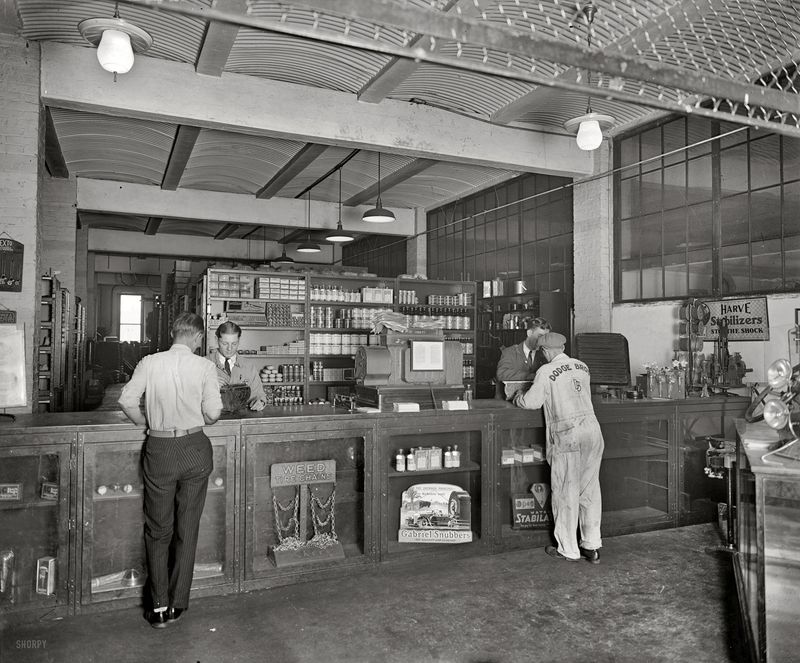
Nothing beat walking into old Mr. Johnson’s hardware store on Main Street where the wooden floors creaked beneath your feet. I’d tag along with my dad on Saturday mornings, mesmerized by the wall of drawers containing every size nail and screw imaginable.
Unlike today’s big box stores, Mr. Johnson knew exactly what part you needed for that leaky faucet, even when you couldn’t describe it properly. He’d listen patiently, nod knowingly, and then disappear into the back room, returning with exactly the right thing.
The store smelled like sawdust and metal, a combination I can still recall perfectly. Free popcorn from an ancient machine near the register made every trip special, and Mr. Johnson always slipped me a piece of candy when Dad wasn’t looking. Those personal touches just don’t exist in today’s retail world.
2. The Corner Video Rental Shop
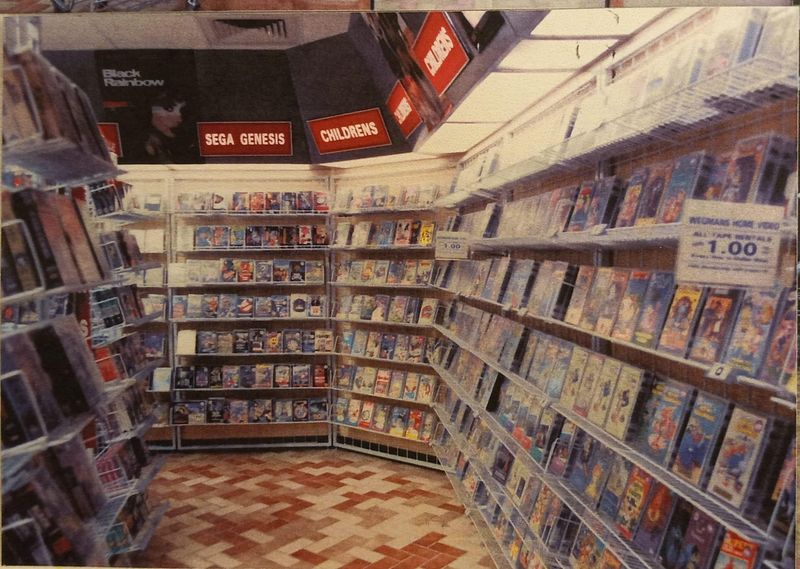
Friday nights meant one thing in our house: pizza and a movie from Video Haven. My sister and I would race through the aisles, arguing over which VHS tape (later DVD) would make the cut for our weekend entertainment.
The owner, Cindy, curated an impressive collection that put streaming services to shame. She knew every customer’s taste and kept special recommendations behind the counter. Walking through those doors felt like entering a treasure cave of entertainment possibilities.
The distinctive smell of plastic cases and the satisfaction of that perfect find can’t be replicated by scrolling through Netflix. I miss the colorful movie posters, the candy selection by the register, and those ‘Be Kind, Rewind’ stickers that were the bane of forgetful renters. The joy of discovering a rare movie that had just been returned created an excitement no algorithm can match.
3. The Soda Fountain Drugstore
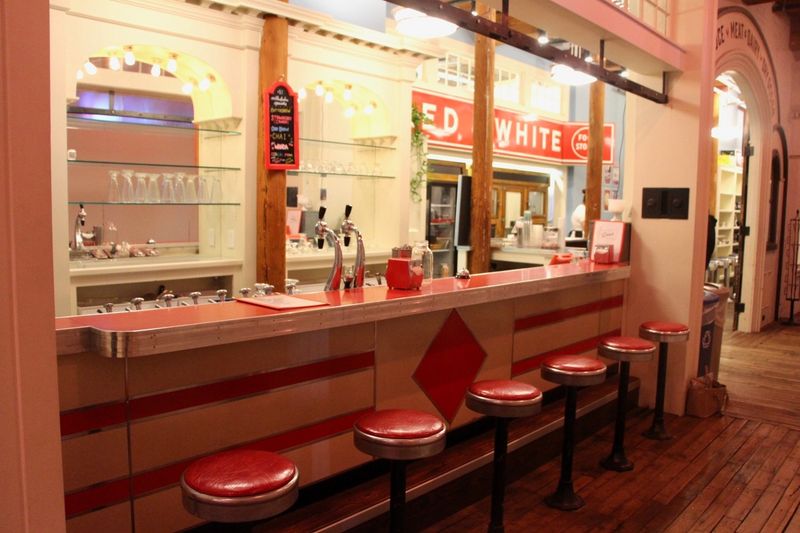
Simmons Pharmacy wasn’t just where you picked up prescriptions – it was home to the best milkshakes in town! My grandpa would take me there after school sometimes, and we’d spin on those red vinyl stools while waiting for our chocolate malts.
Mr. Simmons filled prescriptions in the back, but his wife ran the soda counter with precision and flair. She’d scoop ice cream with lightning speed, whip up phosphates that fizzed just right, and somehow remember every regular’s favorite order. The marble countertop was cool to the touch even on the hottest summer days.
Beyond the treats, it was where the community connected. Town gossip flowed as freely as the cherry syrup, and everyone from the mayor to the mail carrier stopped in regularly. When chain pharmacies pushed them out, we gained convenience but lost that irreplaceable gathering spot where generations shared stories over egg creams and root beer floats.
4. The Record Store That Shaped Your Taste

Vinyl Destination wasn’t just a store – it was my musical education. I spent my teenage allowance there every weekend, flipping through milk crates of albums while the staff played obscure tracks that expanded my musical horizons.
The owner, Dave, had tattoos up both arms and opinions about everything. He’d scoff dramatically if you picked something mainstream but secretly slip recommendation notes into your bag when you bought something he respected. The walls were plastered with signed posters, concert flyers, and album art that changed with whatever genre Dave was obsessed with that month.
Local bands left their demos on the counter, hoping for Dave’s approval. The listening stations in the corner allowed musical exploration before committing to a purchase. That physical connection to music – the artwork, liner notes, and ritual of placing needle to vinyl – created a relationship with albums that digital streaming can’t duplicate. My music collection still bears Dave’s influence today.
5. The Family-Run Diner Where Everyone Gathered
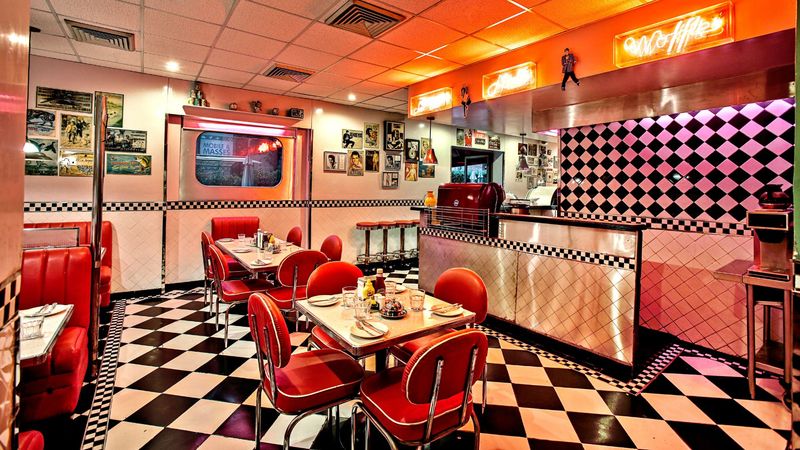
Mabel’s Diner served more than just the best blueberry pancakes in three counties – it dished up the heart of our community. My first job was bussing tables there, where I learned that regular customers didn’t need menus and that some folks wanted their eggs so specific you’d think they were performing surgery.
The booths were worn in all the right places, and the coffee was always hot and strong. Mabel herself worked the grill well into her seventies, moving with the efficiency of someone half her age. She knew which farmers were having trouble, which kids had made honor roll, and who needed an extra slice of pie after a rough week.
After Friday night football games, the whole town crammed inside, celebrating victories or consoling defeats over midnight cheese fries. When the diner closed after Mabel passed, we lost more than breakfast – we lost our town’s living room where everyone, regardless of background, found common ground over bottomless coffee.
6. The Local Bookshop With Reading Nooks
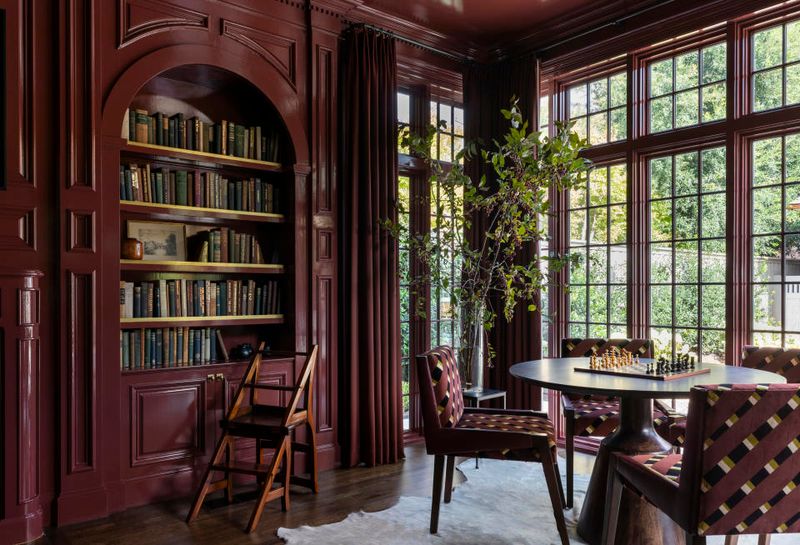
Turning Pages Bookstore occupied a Victorian house with creaky floors and rooms organized by genre. Mrs. Patterson, a former English teacher with silver hair and cat-eye glasses, opened it after retiring from the high school where she’d taught for thirty years.
Unlike algorithm-driven recommendations, Mrs. Patterson’s suggestions came from actually knowing you. She kept a little card file noting customer preferences and would call when something special arrived that matched your taste. The children’s section featured a magnificent tree painted on the wall with a cushioned reading area beneath its branches.
Saturday morning story time packed the place with kids sprawled on pillows while Mrs. Patterson performed each character with different voices. The shop hosted local author events, book clubs that sometimes devolved into wine clubs, and provided a quiet sanctuary for readers seeking escape. When it closed, we lost not just access to books but a curator of literary experiences who knew reading was personal, not transactional.
7. The Arcade Where Friendships Were Forged
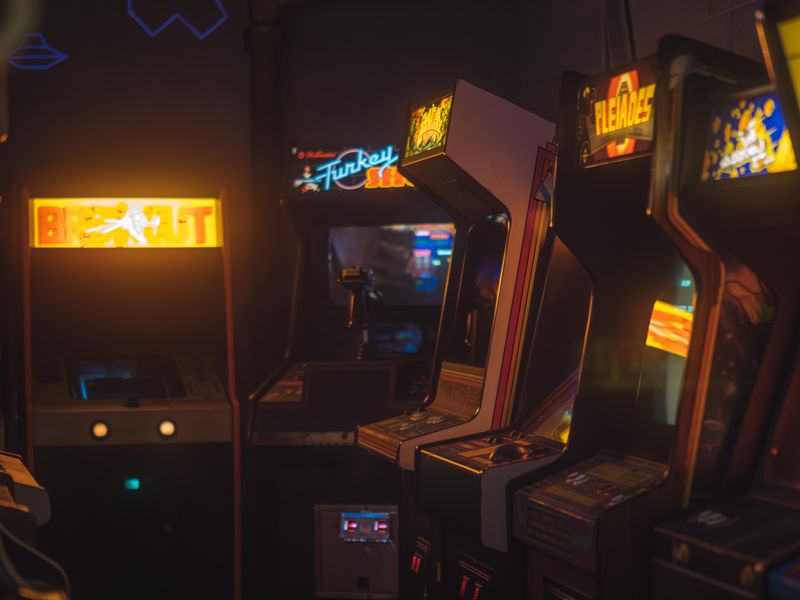
Flashpoint Arcade hummed with electronic beeps and the satisfying clunk of quarters dropping into slots. I practically lived there during summer breaks, mastering Galaga while developing a permanent indent on my thumb from the joystick.
The owner, Tony, ran tournaments on weekends with actual trophies for the winners. He kept a stepstool behind the counter for smaller kids who couldn’t reach certain games and maintained an ironclad “no bullying” policy that made it safe for everyone. The place smelled like pizza and teenage ambition, with the occasional whiff of the cleaning solution Tony used to wipe down the machines every night.
Beyond the games, it was social networking before social media existed. Friendships formed over shared strategies, and legendary players were known by their three-letter high score initials. When home consoles became powerful enough to replicate arcade experiences, places like Flashpoint faded away, taking with them the irreplaceable magic of communal gaming and the excitement of public competition.
8. The Neighborhood Bakery With Glass Cases of Wonder
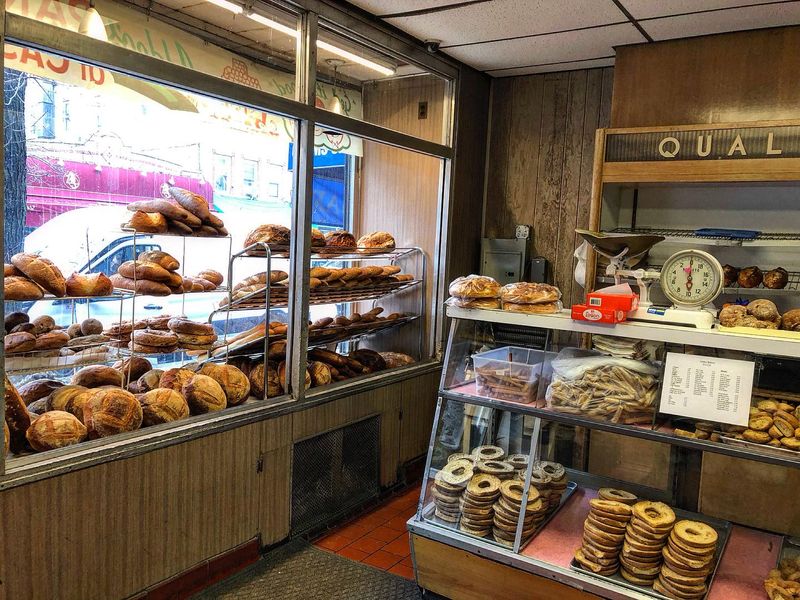
Moretti’s Bakery operated from the same corner storefront for three generations. The glass cases displayed rows of pastries so beautiful they seemed like artwork rather than food. My mom would send me there for Sunday bread, giving me an extra dollar for a cookie that I’d devour before reaching home.
The Moretti family started baking at 3 AM, and the entire block smelled like heaven by sunrise. Mr. Moretti had forearms like Popeye from decades of kneading dough, and his wife wrapped each purchase in white paper with effortless precision, tying it with string pulled from a dispenser on the ceiling. Their recipes came from the old country and weren’t written down anywhere.
Every birthday cake in our family came from Moretti’s, with our names piped in their distinctive cursive frosting. When they retired without a successor, those recipes disappeared forever. The artisanal bakeries that replaced them might make good bread, but they’ll never capture the heritage and personal connection Moretti’s provided to generations of customers.
9. The Drive-In Movie Theater Under the Stars
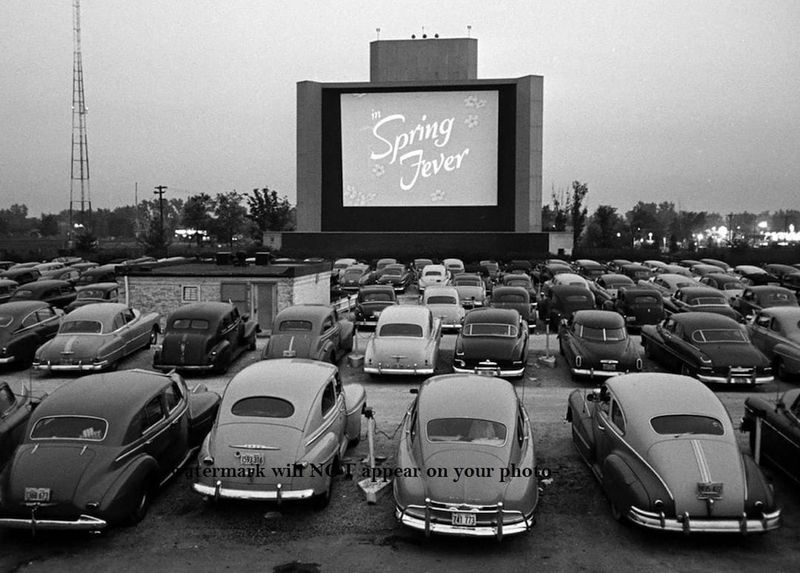
Starlite Drive-In transformed ordinary evenings into magical experiences. My family would back our station wagon into a spot, dad would hang the speaker on the window, and we’d settle in with homemade popcorn and blankets for a double feature under the stars.
The massive screen looked impossibly large against the twilight sky. Between films, kids in pajamas played tag while parents chatted with neighbors across car hoods. The concession stand sold those paper cups of frozen Coke that never quite melted properly and hot dogs that rotated on metal rollers for possibly days.
Teenagers in the back row were less interested in the movie than in each other, and sometimes the sound quality was questionable, but none of that mattered. The communal experience of an entire town sharing laughter and gasps couldn’t be replicated in multiplex theaters. When the Starlite closed to make way for a shopping center, we gained retail options but lost a tradition that had united multiple generations under the same sky.
10. The Toy Store That Encouraged Play
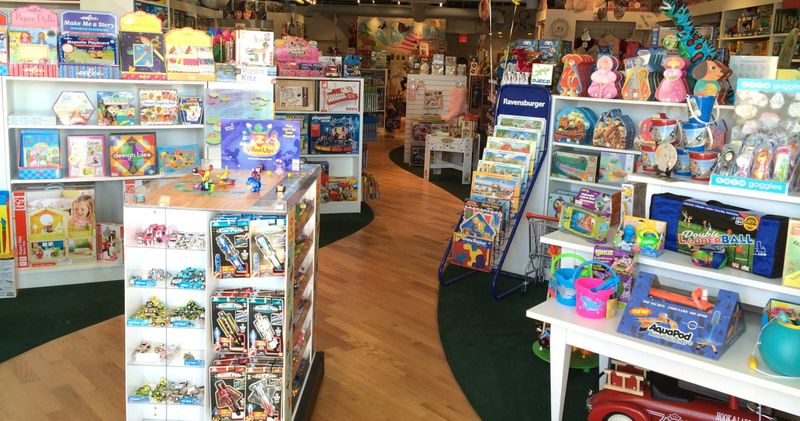
Wonder Toys wasn’t organized by marketing categories or popular franchises – it was arranged by what sparked imagination. The owner, Ms. Winters, a former kindergarten teacher, believed in toys that did less so kids could do more.
Unlike big box stores, Wonder Toys had play stations throughout where children could test anything before purchase. Ms. Winters knew which toys would last and which would break by Christmas morning. She stocked wooden blocks alongside the latest fads and gently steered parents toward options that would grow with their children.
Gift wrapping was always free, and each package included a small surprise – a finger puppet or bouncy ball – that Ms. Winters called “patience rewards” for kids who didn’t peek. The store hosted Saturday workshops where kids built kites or learned magic tricks. When online shopping and chain stores drove Wonder Toys out of business, we lost more than a retailer – we lost a curator of childhood who understood that play isn’t just fun but fundamental to development.
11. The Ice Cream Parlor That Created Memories
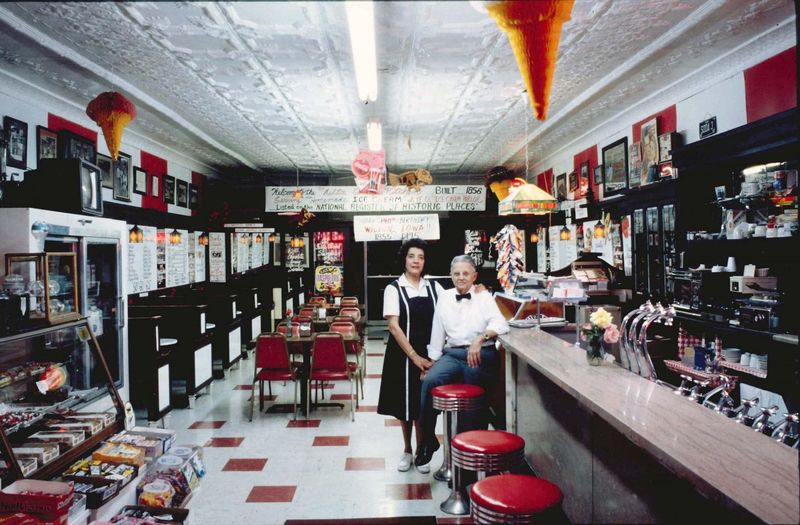
Scoops & Smiles made ice cream the old-fashioned way – in small batches with local ingredients and a lot of muscle power. My first date happened at that marble-topped table in the corner, where I nervously spilled a chocolate malt and still got a second date anyway.
The owners, the Rodriguez family, had a chalkboard of flavors that changed with the seasons. Summer meant fresh peach ice cream using fruit from the orchard outside town, while fall brought pumpkin flavors that put modern PSLs to shame. The parlor’s signature challenge – finishing the “Mountain Sundae” solo – resulted in your Polaroid on the Wall of Fame if you succeeded.
Birthday celebrations meant free scoops with a candle, and breakups were soothed with extra sprinkles “on the house.” The jukebox in the corner played everything from Elvis to Madonna, and the chrome chairs sparkled under lights that hadn’t been updated since the 1950s. When Scoops closed after 40 years, the town lost not just dessert options but a place where life’s sweetest moments were celebrated across generations.
12. The Local Movie Theater With One Screen
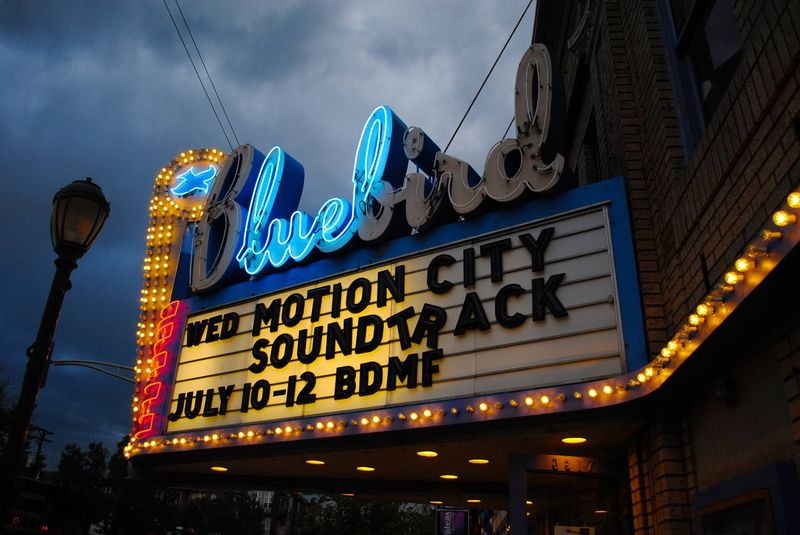
The Majestic Theater stood downtown with its marquee proudly displaying just one film title at a time. I saw my first movie there – a re-release of E.T. that made me hide behind my hands and then beg to return the next weekend.
The ceiling featured hand-painted stars that glowed faintly when the lights dimmed. Mr. Harmon ran the projector for 42 years and knew every customer by name. The concession stand popcorn wasn’t pumped with artificial butter but topped with real melted butter if you asked nicely. Ticket prices stayed affordable because Mr. Harmon believed everyone deserved access to cinematic escape.
Saturday matinees featured cartoon compilations that brought every kid in town together, and the annual summer film festival showcased classics on the big screen. When multiplexes with stadium seating and digital projection arrived, The Majestic couldn’t compete. The building was converted into retail space, but those who experienced movies there still miss the shared gasps, laughter, and occasional tears that united a community through storytelling.
13. The Five and Dime Store With Everything
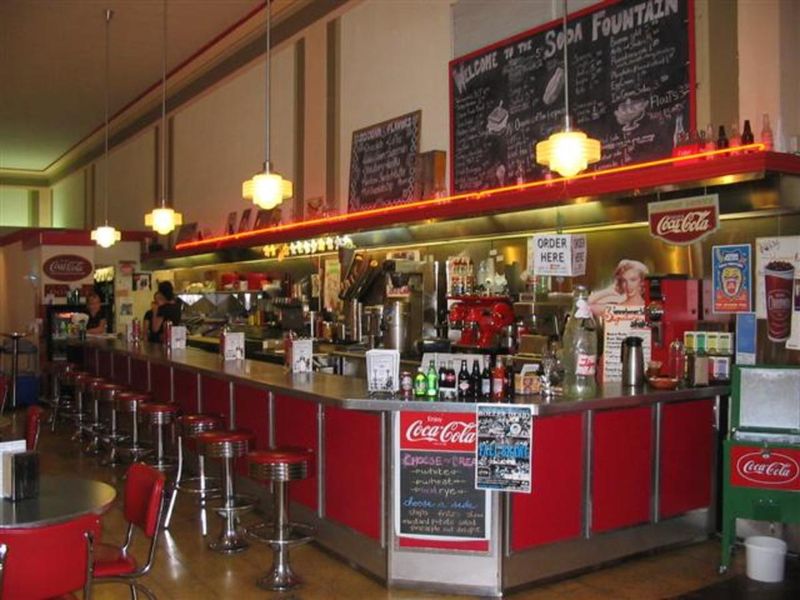
Woolworth’s five and dime was retail magic – a place where a kid with allowance money could feel rich with possibilities. I’d wander the aisles for what felt like hours, weighing the merits of candy versus a plastic toy versus a comic book.
The store had wooden floors that announced every step with a satisfying creak. Glass cases displayed everything from costume jewelry to pocket knives, while the lunch counter served grilled cheese sandwiches that somehow tasted better than any made at home. The basement level housed an unexpected pet department where fish, turtles, and the occasional hamster awaited adoption.
School shopping meant selecting pencil cases and notebooks from seemingly endless options, all affordable enough for any budget. Holiday decorations appeared exactly one day after the previous holiday ended, and the artificial flower section provided countless silk roses for school projects. When big box stores arrived with their warehouse aesthetics and self-checkout lanes, we traded the charm and personal service of the five and dime for lower prices and expanded selection.
14. The Family Pizza Place With Checkered Tablecloths
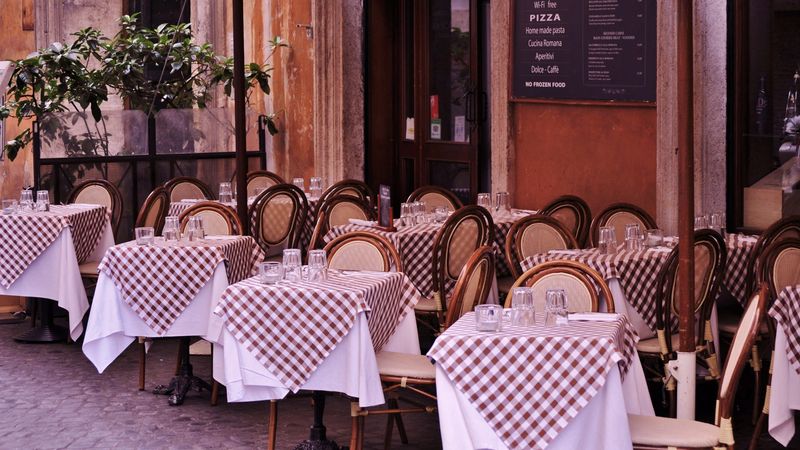
Gino’s Pizza wasn’t just about food – it was where my Little League team celebrated regardless of whether we won or lost. Red and white checkered tablecloths covered wobbly tables, and signed photos of local “celebrities” (the high school football coach and a weatherman from the nearest city) adorned wood-paneled walls.
The dough flew through the air as Gino showed off for wide-eyed kids, tossing and spinning it before transforming it into the perfect thin crust. The jukebox in the corner played everything from Sinatra to Journey, and quarters for it were considered essential parental contributions to dinner entertainment. Arcade games lined the back wall, creating a kid zone that allowed parents to actually finish conversations.
The pizza itself featured a secret sauce recipe that Gino claimed came directly from his Sicilian grandmother. When chain delivery places moved in with their faster service and consistent (but inferior) product, Gino’s struggled to compete. Its closure left a hole in the community that two-for-one deals and online ordering apps can never fill.
15. The Repair Shop That Fixed Anything
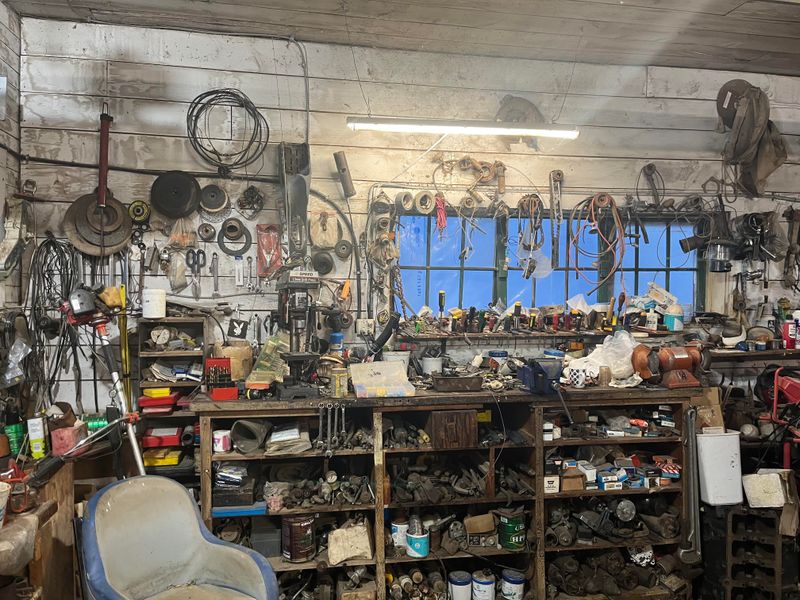
Hank’s Fix-It Shop operated on a simple premise – almost nothing was beyond repair. The cluttered workshop behind his house contained tools that seemed ancient even when I was a child, yet Hank worked miracles with them daily.
Lamps that wouldn’t light, bikes with bent wheels, watches that had stopped ticking – all came back to life under Hank’s patient hands. His prices were scribbled on a faded piece of cardboard, and he often accepted baked goods as partial payment from elderly customers. Oil stains formed abstract patterns on the concrete floor, and every available surface held parts organized in a system only Hank understood.
He taught repair basics to anyone willing to learn, believing self-sufficiency was an essential life skill. My first lesson came when I brought in a broken radio, and instead of taking it from me, he guided my hands through the fix. When Hank retired, no one stepped up to replace him. Our throwaway culture won, and we lost the satisfaction of giving objects second chances along with the wisdom of a man who saw potential in what others discarded.
